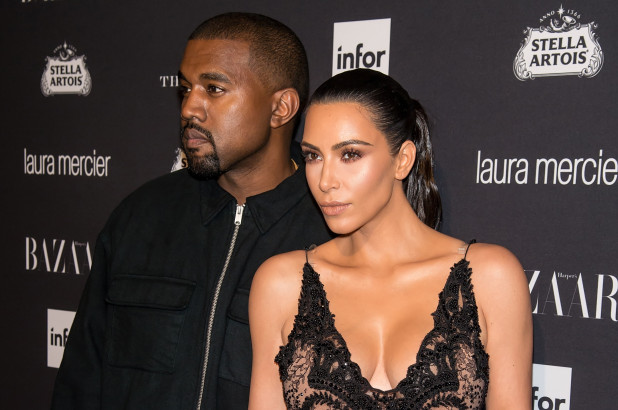Black & Abroad Founders Encourage African Americans To Visit Their Ancestral Continent
- Home
- Black & Abroad Founders Encourage African Americans To Visit Their Ancestral Continent

Black & Abroad Founders Encourage African Americans To Visit Their Ancestral Continent

Eric Martin and Kent Johnson found inspiration in the offensive. Four years ago, the pair launched Black & Abroad, an online travel and lifestyle platform for African Americans. The site features crowdsourced tips and insights for more than 120 countries, including many destinations not known for being minority friendly. The Atlanta business partners recast the racist taunt “Go back to Africa” as a call to visit the land of their ancestors.
Martin and Johnson unveiled the project in April. The campaign’s ultimate goal is to galvanize blacks to visit the continent and to draw the diaspora closer. The company organizes several Africa trips a year to countries including Ghana, Senegal and South Africa. Martin was recently in Washington, his childhood home, and sat down with The Washington Post to discuss the website, the new initiative and his own experiences of going back to Africa. Here is an edited version of the conversation.
Q: Let’s start from the beginning: Black & Abroad. What motivated you and Kent to create the website?
A: Kent and I travel, but we wouldn’t see ourselves reflected in the research or the reviews of the destination. Black Americans spend upward of $63 billion dollars annually on travel. But there wasn’t much identity-based representation. There are destinations that are notorious for not being the nicest to people of colour. Russia is one of them; China is another. A lot of people feel more comfortable when they see themselves in these particular destinations. That identity-based recognition was what we were looking for.
Q: How does the website fill the gap in information?
A: We created a platform where people can go and write about their experiences in these different countries. Both myself and my business partner are black men, but there are different types of black travellers. There are single moms who travel with children, gay couples, single dads and disabled travellers. We just wanted to cover a niche of people and supply them with information.
Q: Where do you find the content?
A: We opened our site up to the general public. It’s consumer-driven; people on the ground, their own pictures, their own experiences. Since our inception in April 2015, we’ve seen representation in over 120 countries on all seven continents. People have been rallying around this cause, and they really love it. We have merchandise, shirts, pins and things like that.
Q: Can you provide an example of a post?
A: We had one woman who went to China and she took a picture of this Chinese woman who was fascinated with the braids in her hair. There was this huge group of Chinese women fascinated with the texture. Some of the people in our community were offended by it; others embraced it. Obviously, if there is a homogenous group of people living in the country, they’re not familiar with seeing this type of hair or this type of person. They are going to be fascinated by it. The opposition was saying that there is a way to respectfully satisfy your curiosity without going up and touching it. It definitely attracts controversial topics.
Q: Can black travellers help break stereotypes?
A: They all think we’re basketball stars. You are black and tall, so you’re automatically a basketball player or an actor. They want your autograph. Or you’re a rapper. Exposure helps to dispel those stereotypes. The more they see us in these places, the more it becomes normal. We want to make sure we set a standard for the next generation of black travellers.
Q: Which countries are the most challenging for African Americans?
A: Russia is one of them. But a couple of weeks ago, we posted a [photo of a] guy who was in Moscow, a young brother. He was wearing his Black & Abroad merchandise and took a picture outside the Kremlin. A girl messaged us right after that and said that photo helped her decide where to study abroad. She wanted to go to Russia but had a little bit of trepidation because of its reputation. And now that she saw that he came back in one piece, she can think about doing it herself. All it takes is one. Certain parts of Europe. Madrid was one place known for blatant racism, so we worked with the tourism office and had a whole Black & Abroad experience there. Those small efforts help to overturn popular misconceptions about certain places.
Q: Have you experienced prejudice while travelling?
A: The most racism I receive is in the U.S., hands down, especially as of late. Travelling abroad has been a refuge for me. It’s been therapeutic because I am able to just be and not have to worry about whether I might get pulled over or mistaken for this person or that person. It’s very different, which is why we encourage travel to the African continent.
Q: What inspired the “Go Back to Africa” campaign?
A: “Go back to Africa” appears online on average 5,000 times a month. We set out to subvert that bigoted phrase and make it something that people of colour embrace. We are trying to take that term and make it into something that we actually do.
Q: What are some common misperceptions African Americans have about Africa?
A: There is a disconnect between African Americans and the continent of Africa. A lot of the narratives we’re fed about the continent are not the best: It’s disease-ridden, it’s Ebola, it’s not safe. There is this divide between African Americans and Africans because we often project that same narrative on them. But a lot of us have never been before.
When you say “Go Back to Africa,” which country are you talking about? Because there are 54 countries on the continent. We partnered with FBC/SIX to create a one-minute video about the campaign and to show people that there is nothing antagonistic about the continent where everything originated. Africa is the heartbeat of the rest of the world. It supplies the resources, it supplies the culture, a lot of things originated on the continent and now we treat it like a wasteland.
Q: How does the project work?
A: The goal is to crowdsource images of black people enjoying themselves in each of the 54 countries. On the website, each country has its own category of images that are being added in real time.
Q: What has the response been?
A: People have been saying, “Where has this been the whole time?” There’s a heightened awareness of who you are these days, because of the divisiveness. It helps to empower us to become more comfortable with who we are: Yes, I will go back to Africa! I will go back to beauty, amazing waterways, the longest rivers in the world, the most beautiful mountain ranges, the best game drives anyone could ask for. I will go back to those things, because that’s the beauty I am from.
Q: What kind of reception do you get when you travel in Africa?
A: My experience in a lot of these places is welcome home. The locals welcome you because they’re just as excited at the connection as we are. There are a lot of war stories that we share in common — of colonization. We just took a road trip from Dakar to the Gambia, which is about three or four hours away. We had to get our passport stamped to get into the Gambia, even though the Gambia is this little crescent inside of Senegal. They speak the same language and eat the same food. Everything is pretty much the same. It’s just that the Gambia was colonized by the British.
Q: How many African countries have you visited?
A: I’ve been to Egypt, Morocco, Mozambique, South Africa, Ghana, Senegal, the Gambia — and that’s it for now. I want to do at least half the countries within the next two years.
Q: What do you find most appealing about these countries?
A: I like Senegal for its fashion. There is a Parisian influence, a marriage between the Senegalese culture and the French culture, and it created this beautiful embracing of color and texture and textiles. South Africa for the infrastructure. I can go there and hit the ground running. They have some of the safest water to drink. In Cape Town, some of the water comes directly from the mountain. Mozambique, because it’s one of those places that’s not on people’s radars. The part that I went to is called Xai-Xai. It’s very natural; it’s not a place where people go to get lit on spring break. Egypt for the art and history. Morocco is an amazing destination. There ‘s this amazing hotel, Jnane Tamsna in Marrakesh, that is owned, operated and designed by a black woman. Ghana was the spiritual fortitude I gained from going there. I went to Cape Coast, where a lot of the slave dungeons are located. They packed slaves into the basement of these dungeons like sardines until it was their turn to be shipped off.
Q: What did you learn from your travels?
A: I was fortunate enough to be able to purchase a plane ticket and connect with my ancestors. You can’t go to Africa and not feel that, because that is where we were displaced from. The history can be a little heavy sometimes, because the Europeans were brutal. When we embrace today’s Africa, the coming together, it makes you appreciate it even more. We just did a tour of a township outside of Cape Town and they talked about how they had to walk around with these cards that identified them as a person of color. You had to carry them all the time. If you didn’t, you went to jail. The courthouse where they’d send these people to jail is now a museum. There’s still a lot of work that needs to be done, but we have made a lot of progress in the way of independence, freedom and self-acceptance.
Q: What’s next for “Go Back to Africa”?
A: We just want to flood the Internet with these beautiful images of beautiful black people enjoying their homeland and being comfortable in it — for ourselves and for the trolls who told us to go back to Africa. We’re knocking out two problems with one solution.
Source: Washington Post
- Share
Classic Ghana
Classic Ghana brings you into a fun world of arts, entertainment, fashion, beauty, photography, culture and all things in between. Let’s explore these together!







